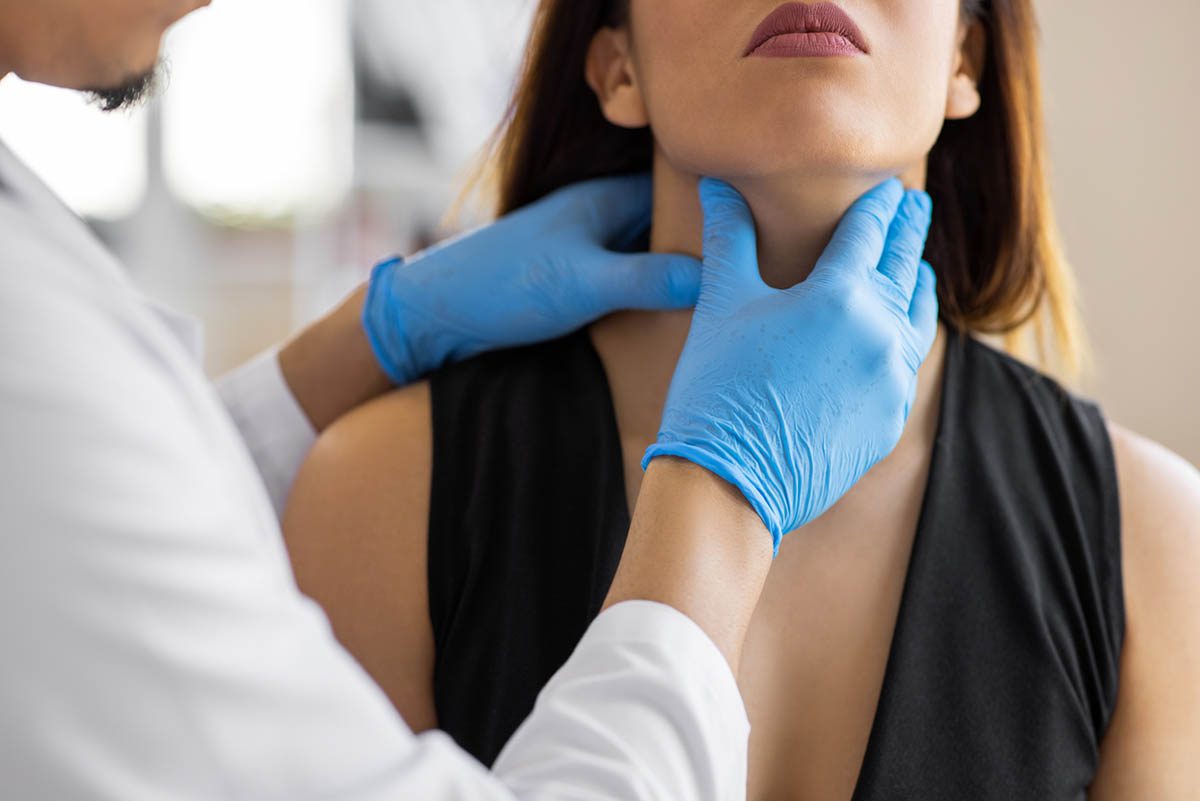Because this piece does not have an abstract, we have provided for your benefit the first 3 sentences of the full text.
Lithium is one of the standard treatments for bipolar disorder, but it has a narrow therapeutic window and multiple side effects that may hinder adherence. Lithium has a wide profile of ophthalmic adverse effects including light accommodation impairment, xerophthalmia, extraocular muscle abnormalities, nystagmus, and ptosis.1 Photophobia was previously considered a rapidly reversible minor adverse effect of lithium mainly occurring in younger patients.


A Case of Delayed-Recovery Lithium-Induced Photophobia and Eye Irritation in a Patient With Bipolar I Disorder
Lithium is one of the standard treatments for bipolar disorder, but it has a narrow therapeutic window and multiple side effects that may hinder adherence.1 Lithium has a wide profile of ophthalmic adverse effects including light accommodation impairment, xerophthalmia, extraocular muscle abnormalities, nystagmus, and ptosis.1 Photophobia was previously considered a rapidly reversible minor adverse effect of lithium mainly occurring in younger patients.2 We present the case of a 50-year-old woman who experienced delayed-recovery lithium-induced photophobia and eye irritation with lithium levels within the therapeutic range.
Case Report
Ms A is a 50-year-old divorced Asian woman. She had a peaceful family life until the age of 38 years when she had her first major depressive episode and was admitted to a psychiatric hospital. At the age of 44 years, she had her first manic episode with psychotic features and was admitted involuntarily for physically attacking her husband. She responded well to lithium and was discharged after 1 month. She was admitted to the hospital 15 times during the following 6 years, mainly due to relapse after medication nonadherence. Other mood stabilizers and antipsychotics were tried but with much lower efficacy than lithium.
At the age of 47, she had her 13th hospital admission due to a recurrent manic episode. She responded well to lithium 1,200 mg/d and risperidone 4 mg/d, and a serum lithium level was maintained in the range of 0.8-1.2 meq/L with attenuated manic symptoms in the following weeks. She had no ocular symptoms before this admission, but xerophthalmia and ocular pruritus gradually developed after 5 months of treatment with no signs of exophthalmos. She visited an ophthalmologist and was provided steroid eye drops for relief, which were ineffective.
Eye irritation and photophobia developed 7 months after she started lithium and risperidone treatment. Her photophobia worsened and prevented her from opening her eye for most of the day, resulting in 1 accidental fall. She needed to wear sunglasses even in indoors. There was no blurred vision, double vision, or nystagmus, and at her next visit, the ophthalmologist suggested possible lithium-induced photophobia. To rule out possible neurotoxicity, her lithium level and renal and liver function tests were monitored but normal during the whole course, and there were no signs of neurotoxicity such as increased deep tendon reflex, tremor, ataxia, gaze palsy, weakness, or consciousness change. The photophobia and eye irritation gradually improved after her medication was switched to carbamazepine and risperidone in the following 6 months. However, she had another relapse and was readmitted to the hospital at the age of 49, and photophobia recurred after reintroducing lithium during both her 14th and 15th admissions.
Discussion
This case demonstrates that lithium-induced photophobia might have a longer course with more prominent discomfort and delayed recovery. This clinical picture resembles neurotoxicity induced by a combination of lithium and risperidone, as neurotoxicity, neuroleptic malignant syndrome-like symptoms, diabetic ketoacidosis, and delirium have been reported before.3 However, in our case, the patient had normal renal and liver function, and no other neurologic signs were noted. The mechanism of lithium-induced photophobia was related to tear component change and resulting eye irritation.4 Photophobia was previously reported to develop at both the intoxication5 and therapeutic6 levels and was considered transient and reversible.7,8 Our case shows that eye irritation and photophobia could occur with no neurotoxicity and might have a longer course than expected. Although lithium-induced photophobia is rare at the therapeutic level, it can be debilitating and recovery may be slow after lithium cessation. Thus, clinicians should keep these possible side effects in mind when prescribing lithium.
Published online: December 19, 2019
Potential conflicts of interest: None.
Funding/support: None.
Patient consent: The institutional review board of Kaohsiung Municipal Kai-Syuan Psychiatric Hospital approved this case report, which is in accordance with the principles of the Declaration of Helsinki. Written informed consent was obtained from the patient, and information has been de-identified to protect anonymity.
REFERENCES
1.Gitlin M. Lithium side effects and toxicity: prevalence and management strategies. Int J Bipolar Disord. 2016;4(1):27. PubMed CrossRef
2.Fraunfelder FT, Fraunfelder FW, Jefferson JW. The effects of lithium on the human visual system. J Toxicol Cutaneous Ocul Toxicol. 2008;11(2):97-169. CrossRef
3.Hsu CW, Lee Y, Lee CY, et al. Neurotoxicity and nephrotoxicity caused by combined use of lithium and risperidone: a case report and literature review. BMC Pharmacol Toxicol. 2016;17(1):59. PubMed CrossRef
4.Dibajnia P, Mohammadinia M, Moghadasin M, et al. Tear film break-up time in bipolar disorder. Iran J Psychiatry. 2012;7(4):191-193. PubMed
5.Caplan RP, Fry AH. Photophobia in lithium intoxication. Br Med J (Clin Res Ed). 1982;285(6351):1314-1315. PubMed CrossRef
6.Pridmore S, Powell G, Wise G. Photophobia and lithium. Aust N Z J Psychiatry. 1996;30(2):287-289. PubMed CrossRef
7.Kaufman PL, Jefferson JW, Ackerman D, et al. Ocular effects of oral lithium in humans. Acta Ophthalmol (Copenh). 1985;63(3):327-332. PubMed
8.Pakes GE. Eye irritation and lithium carbonate. Arch Ophthalmol. 1980;98(5):930. PubMed CrossRef
aKaohsiung Municipal Kai-Syuan Psychiatric Hospital, Kaohsiung, Taiwan
bGraduate Institute of Medicine, College of Medicine, Kaohsiung Medical University, Kaohsiung, Taiwan
*Corresponding author: Wei-Cheng Yang, MD, Kaohsiung Municipal Kai-Syuan Psychiatric Hospital, 130, Kai-Syuan 2nd Rd, Ling-Ya District, Kaohsiung 802, Taiwan ([email protected]).
Prim Care Companion CNS Disord 2019;21(6):19l02477
To cite: Lee H-N, Hsu W-T, Yang W-C. A case of delayed-recovery lithium-induced photophobia and eye irritation in a patient with bipolar I disorder. Prim Care Companion CNS Disord. 2019;21(6):19l02477.
To share: https://doi.org/10.4088/PCC.19l02477
© Copyright 2019 Physicians Postgraduate Press, Inc.
Please sign in or purchase this PDF for $40.00.




